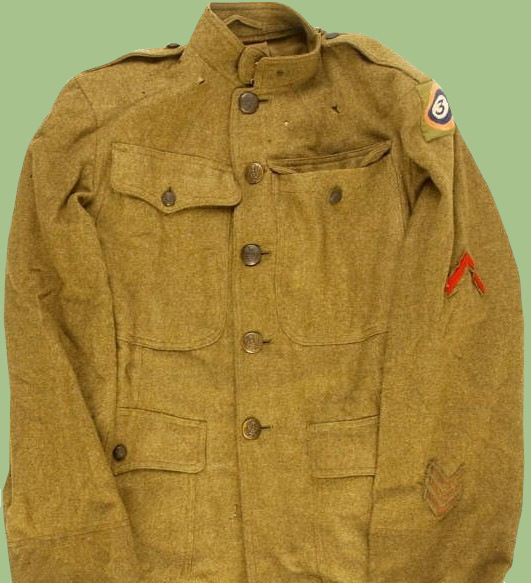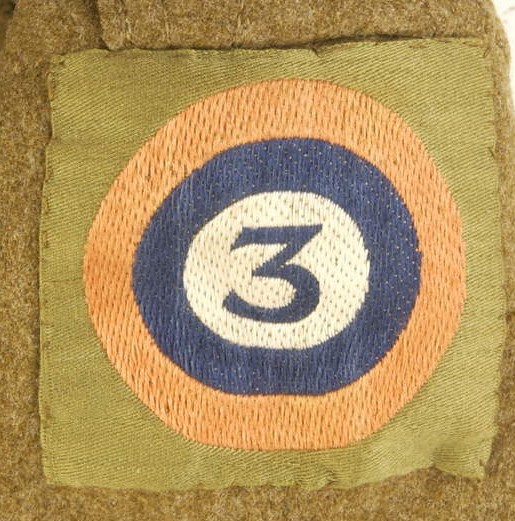|
WWI US Army Pilot Uniform -
Aviation in general was in its infancy when WWI got started. The idea of air combat was a new
concept. New equipment had to be developed to better cope with the demands of flight.
The United States Army Air Service was a forerunner of the United States Air Force. It was established
on May 24, 1918, after U.S. entry into World War I, replacing the Aviation Section, U.S. Signal Corps
which had been the nation's air force from 1914 to 1918.
The uniforms featured here is a US Army pilot tunic. As issued during World War One. Of wool
construction. Four pocket design. Black metal buttons were used for the pockets and the
tunic. The main buttons were bigger than those used in the pockets. Both sets of buttons
had the image of the American eagle in the face.
The tunic was basically the same as those used by Army soldiers.
The soldier belonged to the 3rd Air Corps. A unit patch is placed on one sleeve. the design
consists of multiple circles inside each other. The number 3 is displayed in the center.

|
This page is a recognition and identification guide for WWI US military uniforms.
Multiple detailed photos of a specific sample are provided. Descriptions point out
clearly defined points that should be noted.
One of the most commonly asked questions is "How much is my WWI US uniform worth?".
A price guide is included here to address this question. The value of the uniforms is
reviewed over a period of several years. A trend can be observed. The present worth
of the American military uniforms in the collector's market is illustrated.
This service is provided free of charge to the visitor/enthusiast courtesy of
MilitaryItems.com,
a company dedicated to the preservation of military history and to providing quality
military antiques and collectibles to museums, institutions and the general public.
|
|

This WWI US military collectible may be currently
reproduced.
It is becoming more difficult to be able to tell the fake ones from the real ones because
the quality of the reproductions is improving. The collector must become familiarized with
the construction style and materials employed in the manufacturing of this item.
Attention to the details is critical in order to be able to determine the authenticity of
the collectible.
If you have an interest is seeing other US military uniforms of WWI, you can do so by going
to our The History of the American Military Uniform
identification and price guide.
|





